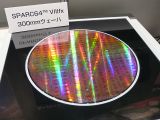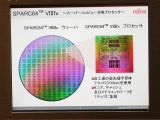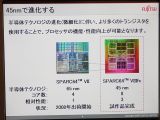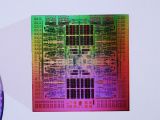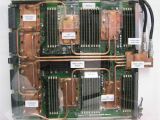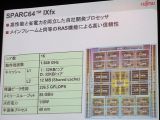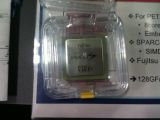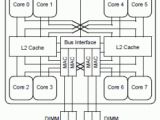Japanese company Fujitsu is now preparing to present its new SPARC64 architecture during this year’s Hot Chips conference. Fujitsu is the maker of the famous SPARC64 VIIIfx processor powering Japan’s incredibly powerful “K Computer.”
The K supercomputer has been the world’s most powerful supercomputer since November 2011 and has maintained its position until last month when IBM took over.
Fujitsu started developing SPARC processors back in 1992, with the introduction of its SPARClite MB8683x microprocessor.
Later in 1995, Fujitsu started manufacturing the first SPARC64 processor for HAL Computer Systems.
HAL developed the architecture and Fujitsu had the FABs making the chip.
This was the first Fujitsu-made SPARC processor that used the more complex SPARC V9 instruction set architecture (ISA) and the 2011 SPARC64 VIIIfx “Venus” processor is still using this ISA.
Fujitsu later bought and then closed the HAL division and practically developed the SPARC64 V “Zeus” processor by itself and presented it to the world in 2003.
The current K supercomputer star, the famous SPARC64 VIIIfx “Venus” processor is based on the SPARC64 VI “Olympus-C” design of 2007.
The SPARC64 VI “Olympus-C” was a dual-core processor that was able to do multithreading, but not in the way processors are doing it today.
The SPARC64 VI was implementing vertical multithreading (VMT), like Fujitsu defined it, or coarse-grained multithreading, in the general scientific understanding.
Although it sounds complicated, it is actually less complex than what Intel processors were able to do at the time.
The dual-core CPU was able to work on four threads, two threads per core, but each core was practically multiplexing between the two threads it was working on and only one thread was executed at a specific time.
The design evolved into SPARC 64 VII “Jupiter” and this brought real simultaneous multithreading (SMT) and a 600-million transistor quad-core chip manufactured in Fujitsu’s 65 nm technology back in 2008.
The SPARC64 VII+ processor or “Jupiter-E” doubled the L2 cache to 12 MB and slightly increased the frequency to 3000 MHz back in the 2009 ~ 2010 timeframe. It was still a quad-core CPU able to handle 8 threads.
Today’s hero, the Fujitsu SPARC64 VIIIfx “Venus” processor was first announced in 2009 and gives up on SMT.
It has 8 cores working at 2000 MHz and an integrated memory controller along with just 6 MB of L2 cache all containing 760 million transistors made in Fujitsu’s own 45 nm technology.
While everybody was expecting Fujitsu to present its SPARC64 IXfx 16-core processor co-developed with LSI, the news is that the Japanese semiconductor manufacturer will present the SPARC64 X architecture that is absolutely unknown now.
All the info we have is on the SPARC64 IXfx 16-core processor that has 12 MB shared L2 cache and a 1.848GHz clock frequency.
All this is done in a TDP of just 115 watts, and considering that the 2012 Fujitsu-LSI design brings 236.5GFLOPS of double-precision performance, we can say that the SPARC64 IXfx is quite an efficient design.
With an efficiency of more than 2 GFLOPS per watt, the SPARC64 IXfx is very close to Intel’s Xeon Phi that’s targeted to achieve 1 TFLOP of double precision performance for about 300 watts.
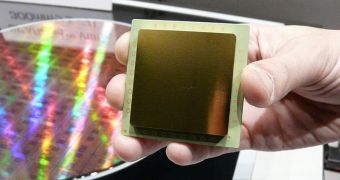
 14 DAY TRIAL //
14 DAY TRIAL // 
